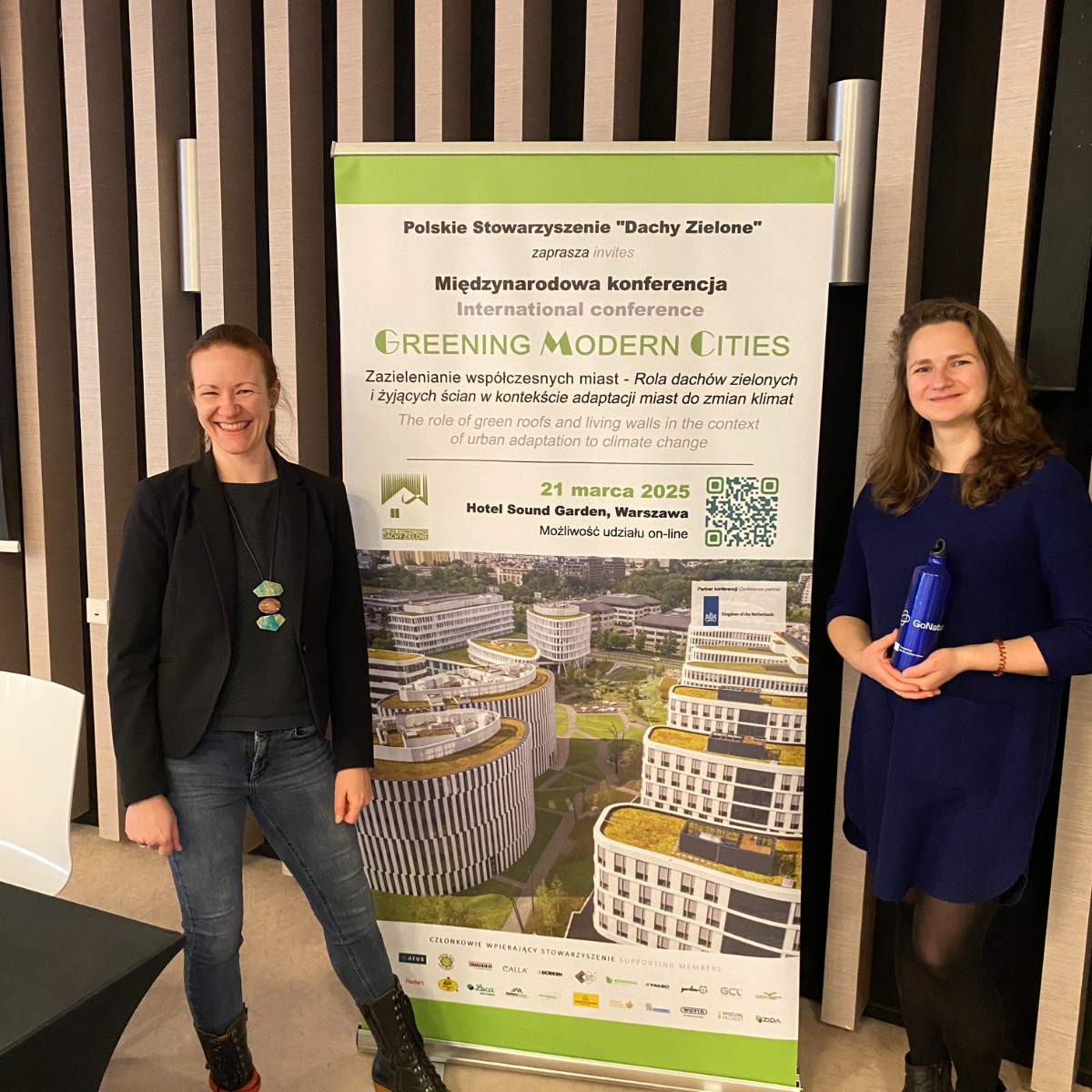Building Nature-Positive Cities: An Interview with European Federation of Green Roofs & Walls
16th June, 2025
A conversation between Tetiana Konchenko and Vera Enzi from the European Federation of Green Roof & Living Wall Associations and the GoNaturePositive! initiative
GoNaturePositive!: Welcome, Tetiana and Vera. Could you start by sharing your vision for the future of urban environments and why green roofs and living walls are so crucial to that vision?
Tetiana & Vera: We strongly believe in a future where cities thrive in harmony with nature - and advancing green roofs and living walls is not just important, but essential for creating resilient and healthy urban environments. The EFB brings together 20 countries across Europe, all united by this shared vision of creating more resilient, healthy, and attractive urban spaces through vegetation in buildings, on roofs, and facades.
GoNaturePositive!: That's a powerful vision. Now, what does a nature-positive economy mean for your sector, and what is one concrete step your organisation is taking (or recommends) to support it?
Tetiana & Vera: For the green roof and living wall sector, a nature-positive economy means actively restoring and enhancing biodiversity in our technology and projects, building climate resilience in systems, and integrating nature into the built environment and construction sector as a whole. It's about shifting from minimising environmental harm to maximising environmental benefit - creating cities where nature can thrive alongside people.
A concrete step the EFB is taking to support this transition is promoting the widespread adoption of multifunctional green infrastructure through policy advocacy, best practice sharing, and collaboration with municipalities and industry stakeholders. We advocate for mandatory biodiversity-based design standards for urban green roofs and walls, ensuring they deliver measurable ecological value and enhanced ecosystem services and wider benefits.
Tetiana Konchenko
General Secretary of the European Federation of Green Roof and living Wall Associations - EFB
GoNaturePositive!: That shift from harm reduction to benefit maximisation is crucial. Speaking of policy, how do current policies support or hinder your sector's efforts toward nature-positivity?
Tetiana & Vera: While some policies are moving in the right direction (like Biodiversity Strategy for 2030, Nature Restoration Law, New European Bauhaus Initiative), implementation remains inconsistent across member states. Too often, green roofs and walls are viewed as aesthetic add-ons rather than essential infrastructure for nature-positive urban development.
Regulatory frameworks need to better recognise, demand and incentivise high-quality, biodiverse green infrastructure. This includes harmonised standards, financial support mechanisms, and integration of nature-based solutions into climate adaptation, urban planning, and building regulations. Without stronger and more coherent policy backing, the sector's full potential to contribute to a nature-positive economy will remain underutilised.
GoNaturePositive!: You mentioned the challenge of inconsistent implementation across EU member states. How does the EFB work to bridge those gaps and ensure knowledge sharing across your 20 member countries?
Tetiana & Vera: That's exactly where the EFB's collaborative approach becomes vital. As our President Paulo Palha says, "Together, as a united community, each member's action becomes a seed of change, cultivating a greener and more resilient future for all urban areas." We facilitate best practice sharing between associations, create standardized approaches that can be adapted locally, and provide a unified voice when advocating for policy changes at the European level.
Each country faces unique challenges - climate conditions, regulatory environments, economic contexts - but the fundamental principles of creating biodiverse, multifunctional green infrastructure remain constant. Our federation allows members to learn from each other's successes and adapt solutions to their local contexts.
Vera Enzi-Zechner
Vicepresident of the European Federation of Green Roof and Living Walls Associations -EFB
GoNaturePositive!: Looking ahead, what role do you see initiatives like GoNaturePositive! playing in accelerating the transition toward nature-positive urban environments?
Tetiana & Vera: Initiatives like GoNaturePositive! are absolutely crucial because they create the collaborative platform needed for systemic change. Your work in bringing together policymakers, investors, businesses, and wider society addresses the fundamental challenge we face - that environmental issues transcend borders and sectors.
The research, demonstration projects, and transformational leadership that GoNaturePositive! promotes help shift the narrative from viewing green infrastructure as optional to understanding it as essential urban infrastructure. When investors, businesses, and policymakers can see clear frameworks, measurable benefits, and pathways for implementation, it accelerates adoption across the entire ecosystem.
GoNaturePositive!: Finally, what would you say to people who want to contribute to building more nature-positive cities in their own communities?
Tetiana & Vera: Start by recognising that every action matters, whether you're a policymaker, business owner, architect, or citizen. Advocate for green infrastructure in your local planning processes. Support policies that go beyond aesthetic greening to prioritize biodiversity and ecosystem services. If you're in the construction or development sector, consider how your projects can actively contribute to urban biodiversity rather than just minimize harm.
Most importantly, understand that this transition requires all of us working together. Cities are complex systems, and creating truly nature-positive urban environments requires collaboration across disciplines, sectors, and borders. The future we envision - where cities thrive in harmony with nature - is achievable, but only if we act collectively and with urgency.
“A nature-positive economy it’s about shifting from minimising environmental harm to maximising environmental benefit - creating cities where nature can thrive alongside people.”
This interview was conducted as part of GoNaturePositive!'s ongoing series exploring pathways toward a nature-positive economy. For more insights on transforming construction and urban development, view the built environment sectoral brief. Learn more about the EFB at efb-greenroof.eu and GoNaturePositive! at gonaturepositive.eu



